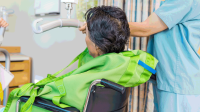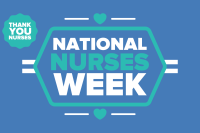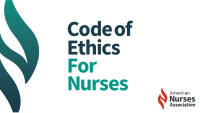Good for you, good for the profession
The recently released National Academies of Sciences, Engineering, and Medicine report, The Future of Nursing 2020–2030: Charting a Path to Achieve Health Equity, outlines the role nurses can play in creating healthy communities for all. I was impressed with this specific focus and the emphasis on how the systems that educate, pay, employ, and enable nurses can better support them. Sponsored by Robert Wood Johnson Foundation, the report builds on the 2011 Institute of Medicine report, The Future of Nursing: Leading Change, Advancing Health.
After reading the 500-page report, the bottom line is that the findings and recommendations are good for you and good for the profession. Until you have time to read the complete work, I’ll review the key points.
To create a future path for nursing into 2030, an expert committee evaluated previous literature in addition to new information from the COVID-19 pandemic to better understand the dramatic changes the healthcare industry is undergoing. The panel then summarized the challenges healthcare and the nursing profession will likely face in the future and discussed steps for overcoming them, including how nurses can
- work over the next decade to reduce health disparities and promote equity
- address rising costs through more equitable care delivery
- use technology to maximize reaching vulnerable populations
- prioritize patient- and family-focused care.
The report notes that nurses “are well prepared to create, partner in, and lead the complex work of integrating the social and health sectors in support of the health and well-being of individuals, families, and communities.” Its authors envision “a major role for the nursing profession in engaging in the complex work of aligning public health, health care, social services, and public policies to eliminate health disparities and achieve health equity.” Achieving this vision will require strengthening and resetting the profession’s focus in education, practice, and research, which can build a path toward health equity.
I was troubled to learn that compared to other developed countries, the United States has the highest poverty rate, the greatest income inequality, and some of the poorest health outcomes. The COVID-19 pandemic didn’t create health inequities—it shined a bright light on them.
The expert committee stated that the current system of care isn’t designed intentionally enough or powerfully enough to address health inequities. It advises that better healthcare can be achieved by addressing six priorities to meet the needs of the U.S. population and the nursing profession over the next decade:
- By 2022, make permanent all state and federal policy changes that have expanded nursing scope of practice in response to the COVID-19 pandemic.
- Prioritize funding and deployment of more school and public health nurses at all levels.
- Strengthen nursing education to prepare students to adapt to new technologies and the application of big data.
- Protect nurses’ health and well-being via changes in workplace culture, environment, and policies.
- Better prepare nurses for disaster and public health emergency response.
- Increase the number of PhD-prepared nurses.
Nurses are powerful in number and powerful in voice, and the entire world needs our expertise now more than ever. Investing in nursing at these enormous levels saves lives, saves money, and catalyzes the changes needed to achieve health equity. Here’s hoping it won’t take too long.


Lillee Gelinas, MSN, RN, CPPS, FAAN
Editor-in-Chief



















2 Comments. Leave new
How does this report address the ongoing nursing shortage and the fact that our colleges are in crisis and cannot find or fund nursing educators? Below is an excerpt from an SBAR created by myself for our corporation in addressing our local college’s challenges and the fact that their program may close this fall due to the shortage in educators.
Currently the nation faces a shortage of 510,000 nurses that is further impacted secondary to the pandemic. In addition, the nursing population is aging with an additional 4 million nurses expected to retire worldwide in the next ten years. The December 2020 Hechinger Report estimates a need for California to train a minimum of 65,000 nurses a year to meet the shortage in California. This ongoing shortage of bedside nurses further contributes to the shortage of nursing educators.
Welcome and repeat practice tests for diploma school Nursing Program entrance exam. My local college requires a grade of “A” in Anatomy & Physiology l and ll in order to be eligible to take the nursing entrance exam. Lower the bar a little. I just got a B+ in my last class. It was an 89.3 average. I asked the professor twice to allow some kind of make-up or do-over…she refused